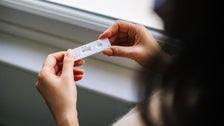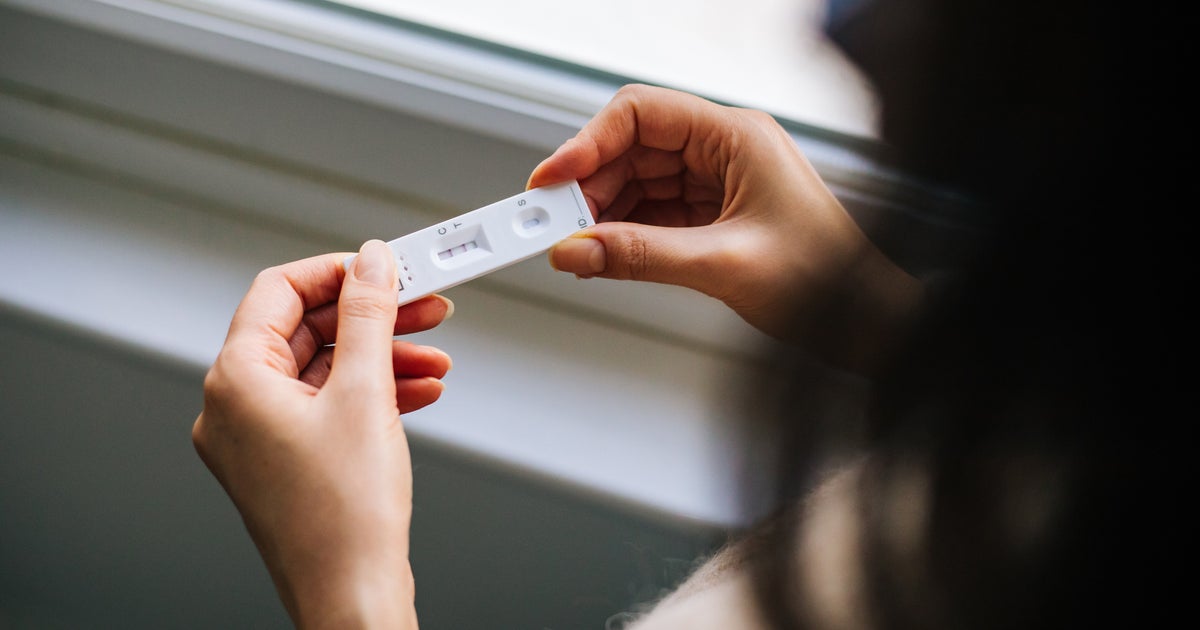
It’s that time of year again. Upper respiratory infections like respiratory syncytial virus (RSV), influenza and COVID are rising — and we’re only just getting started.
The signs and symptoms of these infections can be quite similar and include anything from a fever and cough to a sore throat, congestion and a headache. Because it can be tricky to determine which upper respiratory infection you have based on symptoms alone, the best way to figure it out is to get tested. And, when it comes to COVID, getting an accurate test result requires some finesse.
New research published in the journal Clinical Infectious Diseases discovered that the best time to test yourself for COVID with an at-home test isn’t as soon as symptoms appear, as with influenza, but a few days after developing symptoms.
Because it can take a couple of days for the infection to build in your body, a negative test on the first or second day of symptoms doesn’t necessarily mean you don’t have COVID. It might just take another day or two for the test to pick up the infection.
Even so, official guidance from the Centers for Disease Control and Prevention recommends testing as soon as you feel sick.
“I suggest that you test early since you do not need the viral load to peak to [test positive],” Dr. Dushyantha Jayaweera, an infectious disease specialist at the University of Miami’s UHealth, told HuffPost. And once you test positive, “you can isolate yourself and prevent spreading the disease,” he added.
At-home tests catch most infections four days into symptoms.
In 2020, it was widely believed that the best time to get tested for COVID was as soon as you had symptoms. The rationale, according to research papers published earlier in the pandemic, was that viral loads, or the amount of virus present in your body, were highest — and, therefore, most detectible on a test — at the onset of symptoms. From there on out, viral loads dwindled, making it harder to produce a positive test result.
However, as the pandemic raged on and new variants such as omicron emerged, the coronavirus’ behavior changed. Omicron viral loads appeared to be smaller than what was observed with delta, the variant responsible for the spike in cases in the summer of 2021, and it became clear that serial testing, or testing every couple of days, was the most effective way to test.
But things changed as the population became more immune to COVID through both vaccinations and past infections. Now, viral loads appear to peak four days after symptoms first show up, the new report suggests. The findings match other studies that similarly found that viral loads are peaking later, around three to four days into symptoms, compared to when they peaked at the start of the pandemic.
According to the study, symptomatic people who test positive on a PCR test, the most sensitive diagnostic test available for COVID, may not reliably test positive on an at-home test until their third, fourth, or in some cases, fifth day of symptoms.
“If you use an at-home antigen test and test negative, know you have a better chance of testing positive in a couple of days. Test yourself again in 48 hours. If you’re still negative but symptomatic, do so again 48 hours later.”
In addition, testing negative on an at-home test is not a guarantee that you’re COVID-free. You may just have low levels of the virus that could potentially be rising, the study suggests. For those who are symptomatic but continue to test negative on repeat at-home tests, COVID can’t be ruled out because omicron (and its subvariants, which are floating around now) tends to produce lower viral loads than past variants.
The new data suggests that most transmission is likely occurring during the symptomatic phase, according to Dr. Monica Gandhi, an infectious disease specialist with UCSF. “Viral loads peaked four days after symptom onset, which may mean that you are maximally infectious four days into symptoms,” Gandhi said.
Here’s when — and how — to test for COVID in 2023.
The CDC continues to recommend immediate testing if you have COVID symptoms. Even with the recent findings, infectious disease experts agree that the safest time to test is as soon as you feel sick.
“Test as soon as possible after you develop symptoms,” said Dr. Nathaniel Hafer, an assistant professor of molecular medicine at UMass Chan Medical School.
If you use an at-home antigen test and test negative, know you have a better chance of testing positive in a couple of days. Test yourself again in 48 hours. If you’re still negative but symptomatic, do so again 48 hours later. As the study shows, virus levels are highest three to four days after symptom onset.
“This repeat test is important because it takes a few days for the virus to build up in the nose so that it can be detected on a rapid test,” Hafer said.
When you test, you want to thoroughly swab both nostrils, per the directions on your test kit. Some doctors have recommended swabbing your throat, too, in addition to both nostrils, since the virus may replicate there, too. While the evidence is mixed and this method is not authorized for the test kits available in the United States, it may enhance the test’s accuracy. That said, it is not a necessary step. “You cannot skip the nose for the throat,” Jayaweera said.
If you test positive on your at-home kit and want to get prescribed Paxlovid, it’s worth reaching out to a doctor or setting up a telehealth appointment, Jayaweera said. This is especially important for people who are 65 and older, are on immunosuppressants or have multiple comorbidities.
Treatment is most effective as early in the infection as possible. Most people who get COVID will be able to recover at home with rest, hydration and over-the-counter medications such as acetaminophen.
If you test negative, you may have another infection like the flu, in which case it may still be worth reaching out to a doctor who can test you for influenza or RSV. It’s officially cold and flu season, and as we saw last year, COVID isn’t the only respiratory illness that’ll be circulating around the country this fall.







